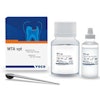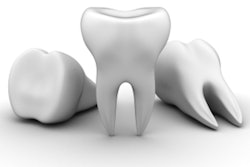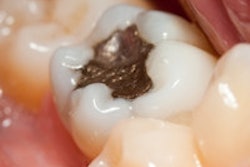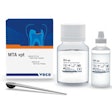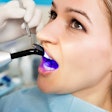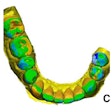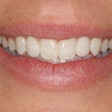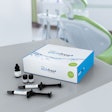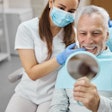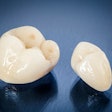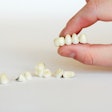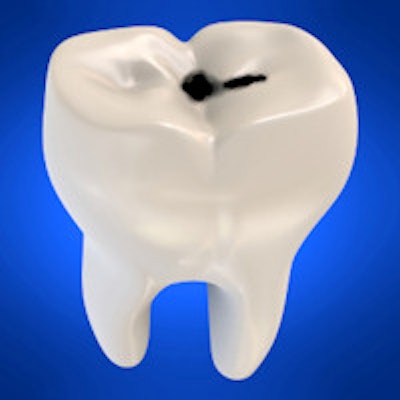
Resin composite mixed with bioactive glass (BAG) fillers may be able to delay secondary caries, according to a recent study. Researchers discovered that BAG fillers reduced the amount of bacteria that penetrated a tooth's marginal gap.
The study evaluated how well Streptococcus mutans bacteria penetrated composites with and without BAG. The researchers found that the composites with BAG significantly halted bacteria penetration (Dental Materials, November 24, 2015).
"This suggests that the release of BAG ions into the gap can help control the local gap chemistry and create an antimicrobial environment that slows biofilm development and propagation," wrote the study authors, led by Dmytro Khvostenko, PhD, from the School of Mechanical, Industrial, and Manufacturing Engineering at Oregon State University.
Testing the composites
The most common reason for restoration replacement is secondary caries, according to the authors. Yet, despite the fact that bioactive glass has both antimicrobial and remineralization properties, researchers have not readily studied BAG-containing composites.
"Accordingly, the goal of this research was to examine the effect of BAG additions on bacterial biofilm formation along marginal gaps of simulated tooth fillings in vitro," they wrote.
To test the effectiveness of bioactive glass at delaying the onset of secondary caries, the researchers created two composites. The first combined 57 percentage by weight (wt%) silanated strontium glass and 15 wt% BAG with a resin matrix. For the second, a control composite was created with 67 wt% silanated strontium glass and 5 wt% aerosol silica.
Then, a computer-controlled milling machine drilled identical cavities into 12 recently extracted molars. The molars were sterilized and prepped before the researchers placed the composites, either with or without bioactive glass. In total, the researchers studied six composites with 15 wt% BAG (15BAG) and six control composites with 0 wt% BAG (0BAG).
Once the molars were resterilized, the researchers added 1 mm of S. mutans bacteria culture to each dish, which were then incubated "until the biofilm could be observed with the naked eye." When this occurred, the researchers ran the six samples through a custom bioreactor system that replicated the forces of chewing. The system was programmed with two alternating cycles to replicate both chewing and the hours of rest when biofilm grows.
An intermittent cycle phase of two hours followed by four hours without cycling provided a total of 43,200 cycles per day, or approximately 605,000 cycles in two week, the authors explained. "Thus, the total number of cycles is equivalent to nearly one year of normal human chewing."
After two weeks of cycling, the researchers tested the 15BAG and 0BAG composite samples for bacteria penetration and demineralization. While all the 0BAG samples had 100% bacteria penetration in the gap, the 15BAG samples had an average of only 61% penetration, they found.
| Bacterial penetration in the gap for composite samples | |||
| Sample | 0BAG | 15 BAG | |
| 1 | 100% | 27% | |
| 2 | 100% | 35% | |
| 3 | 100% | 55% | |
| 4 | 100% | 70% | |
| 5 | 100% | 80% | |
| 6 | 100% | 100% | |
| Mean | 100% | 61% | |
"It is seen that bacterial penetration is consistently much deeper for the 0BAG composites than for the 15BAG, while there was no statistically significant difference in gap size," the authors wrote. "Bacterial penetration for 0BAG composite samples was always to the full depth of the restoration (100% average), sometimes propagating along the floor of the cavity under the restoration."
The authors also found that demineralization mostly occurred only where the bacteria penetrated the teeth. "This is attributed to the creation of the low pH environment by the visible biofilm in the gap," they explained.
More research to come
While the study demonstrated how bioactive glass may be able to be utilized to reduce the number of replaced restorations for secondary caries, the authors noted several times that more research needs to be done to better understand bioactive glass. As of now, researchers are not sure what causes its antimicrobial and remineralization properties.
This study is also part of a larger body of work to evaluate using a BAG composite alone, using a BAG composite adhesive, and using both at the same time.
"Ultimately, it is suspected though that the best solution will be an antibacterial adhesive used in conjunction with an antibacterial composite," the authors explained.
